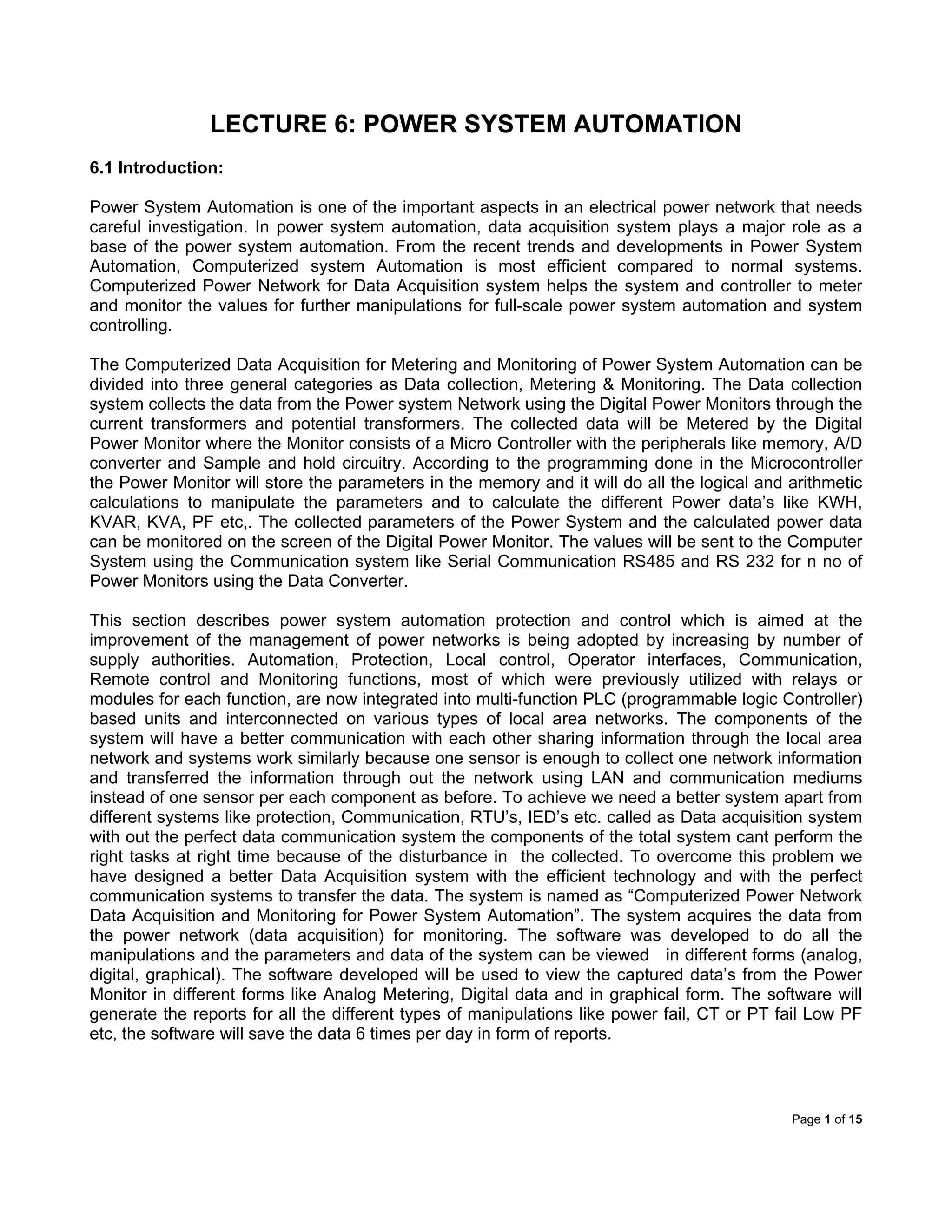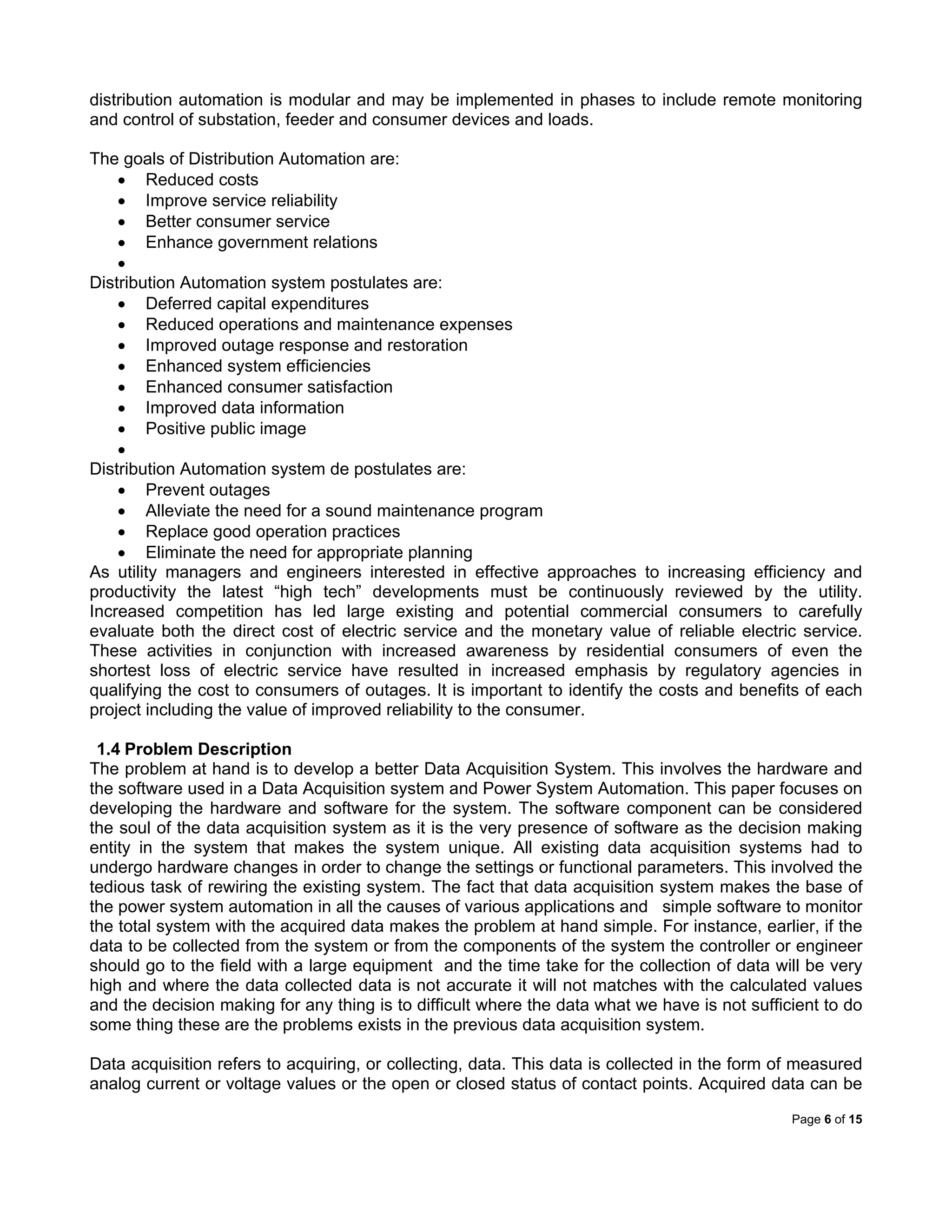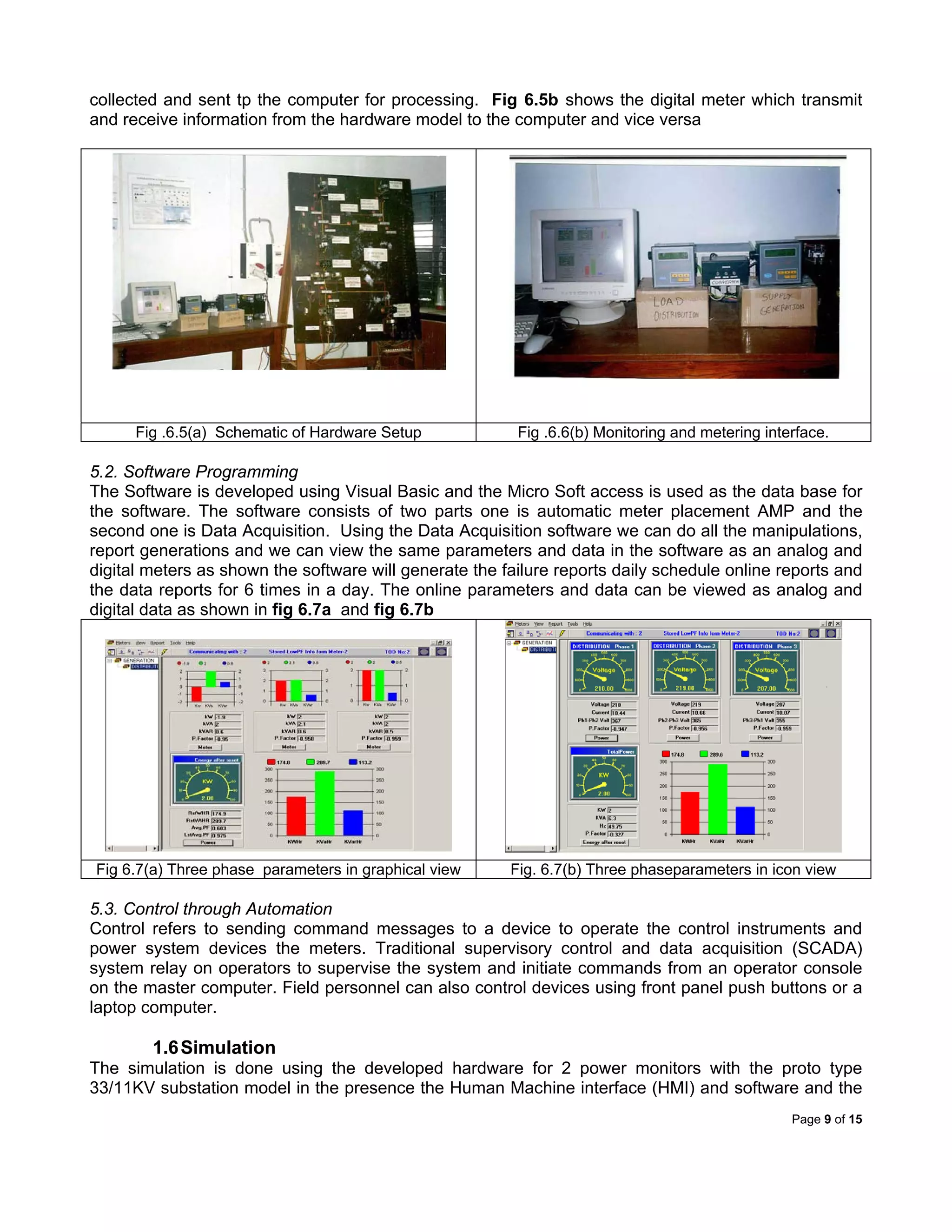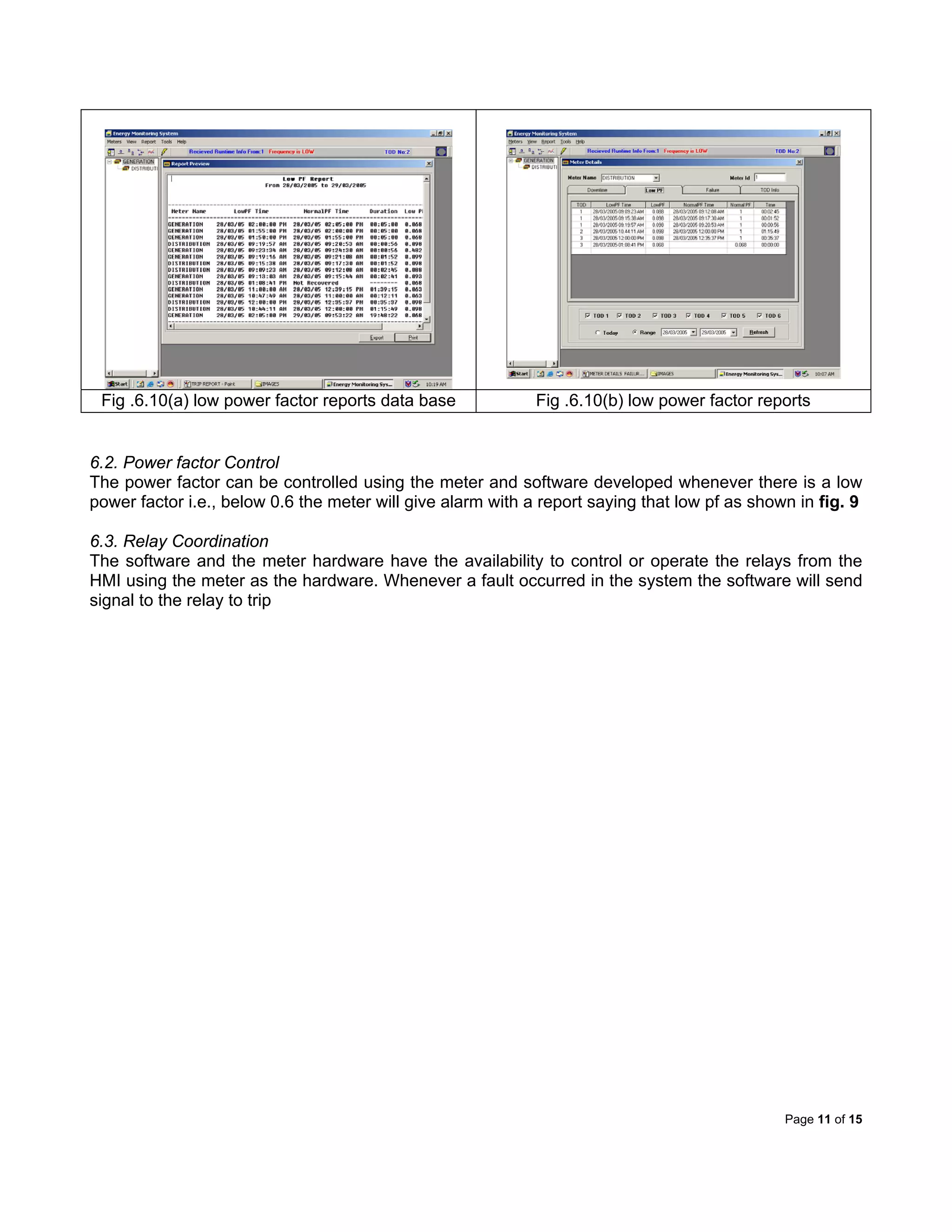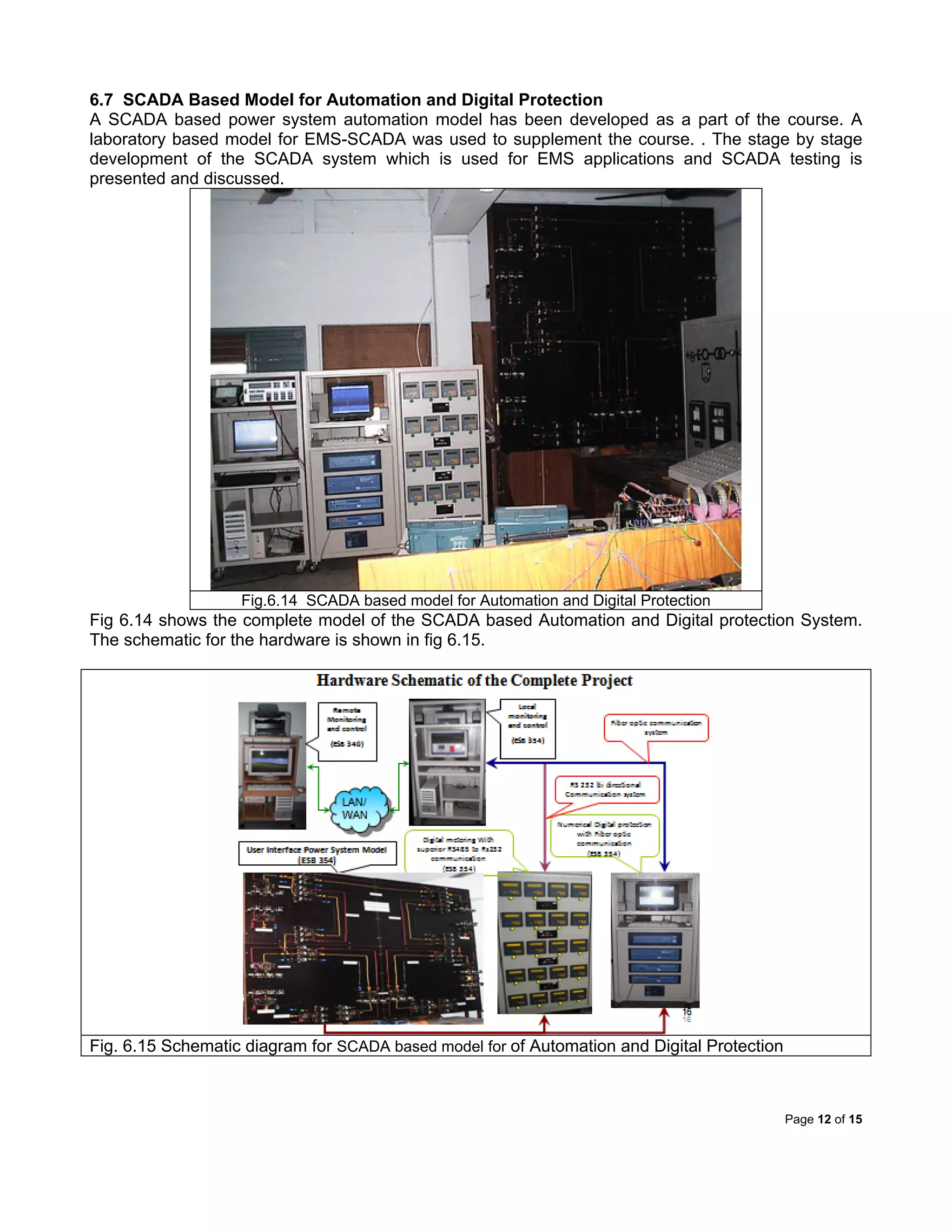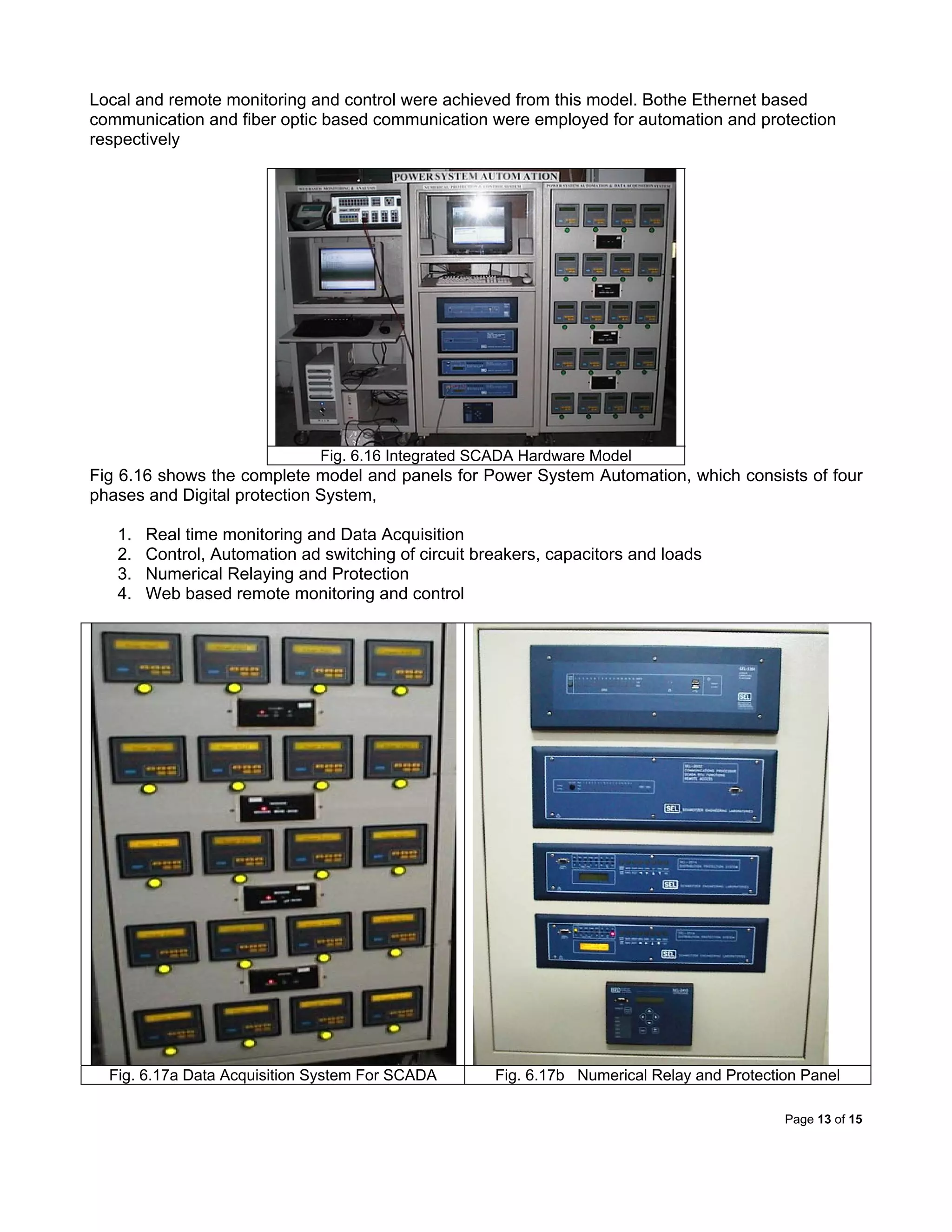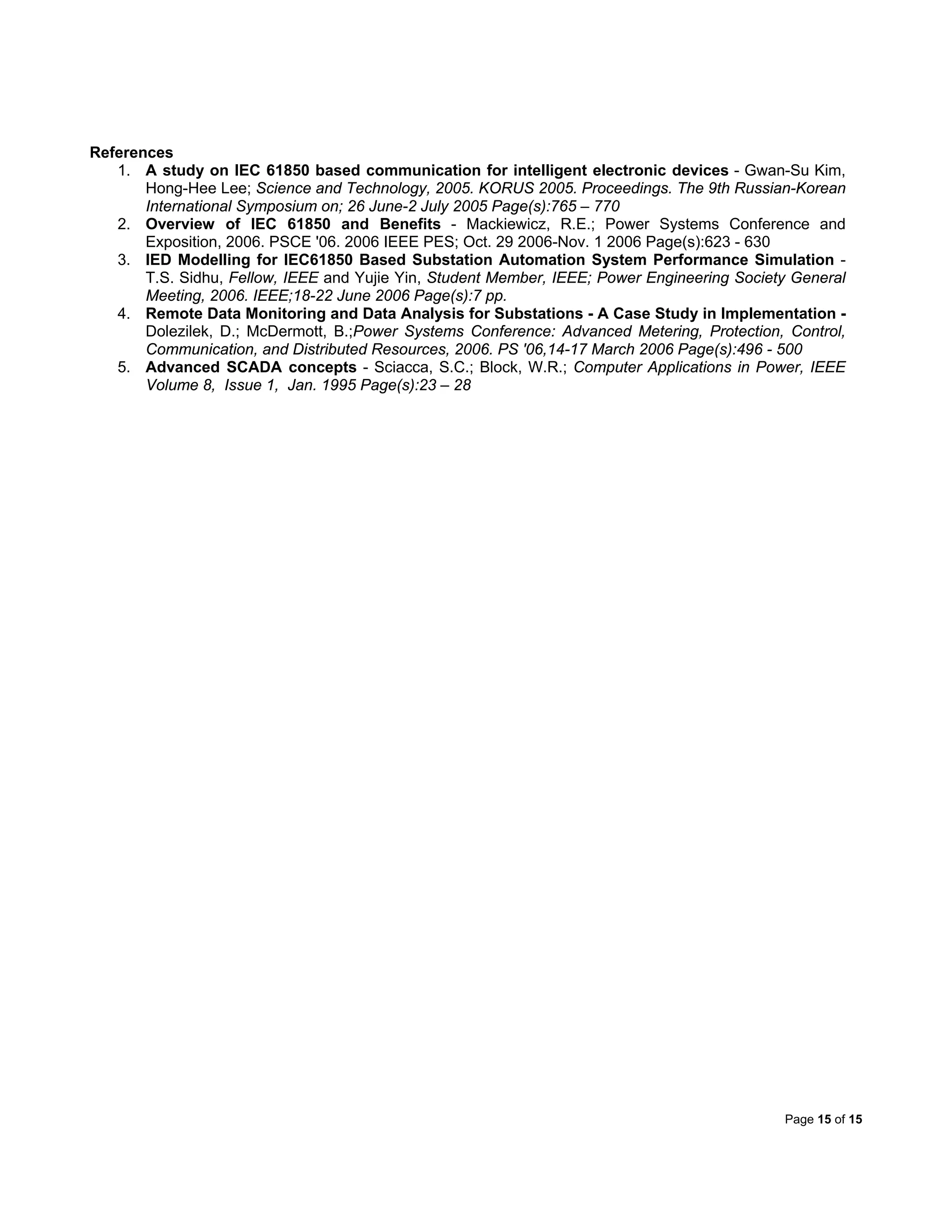This document provides an overview of power system automation and data acquisition systems. It discusses:
1) The role of data acquisition systems in power system automation and how they collect data from the power network using sensors and send it to programmable logic controllers and computers.
2) The key components of power system automation including electrical protection, control, measurement, monitoring, and data communication.
3) The architecture of power system automation including three levels - field equipment, protection/control equipment, and operator displays - connected by communication networks.
